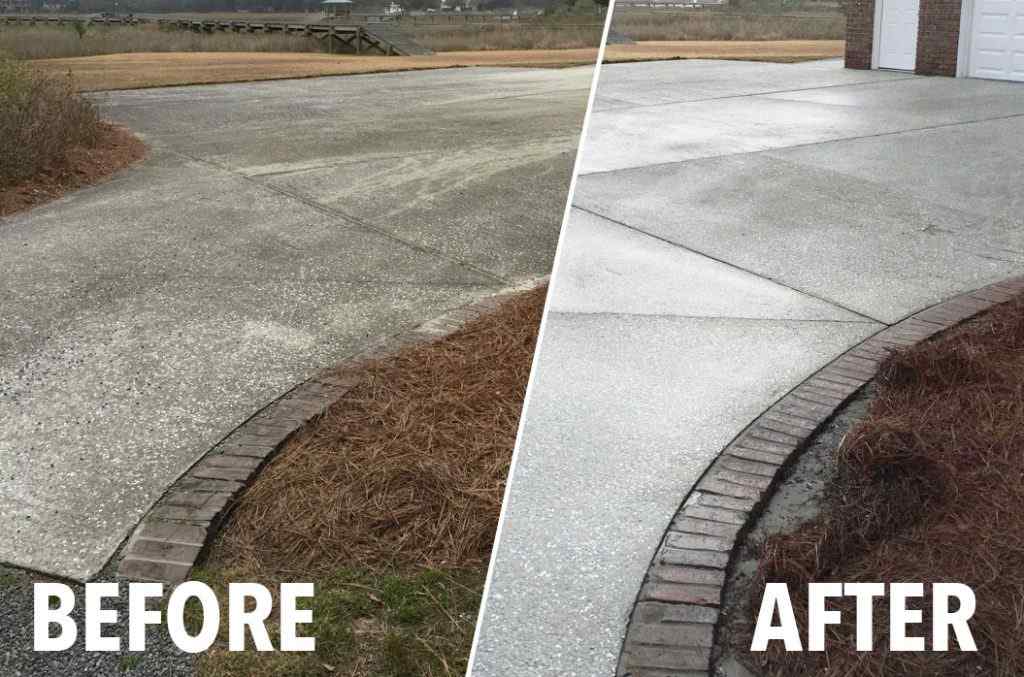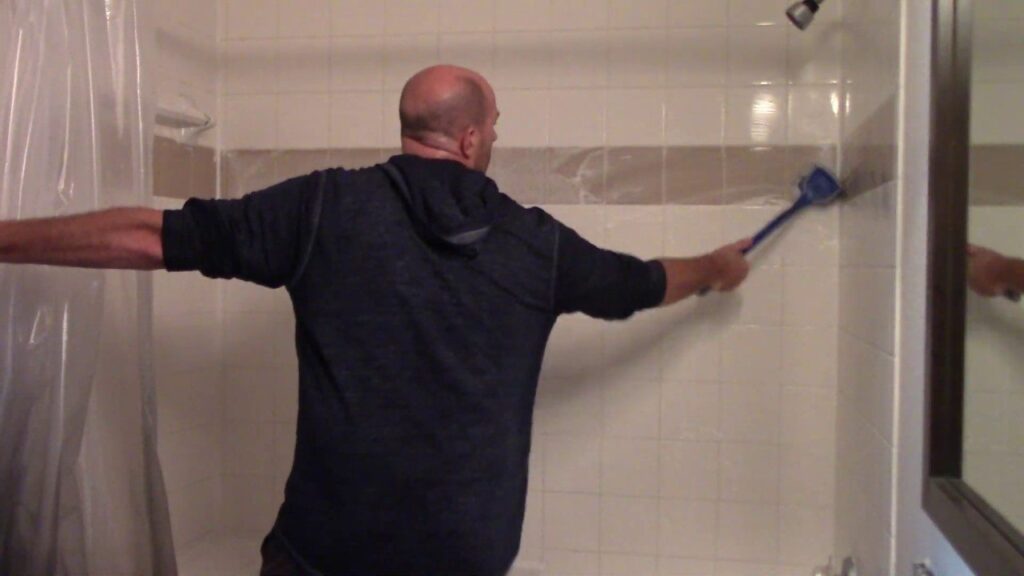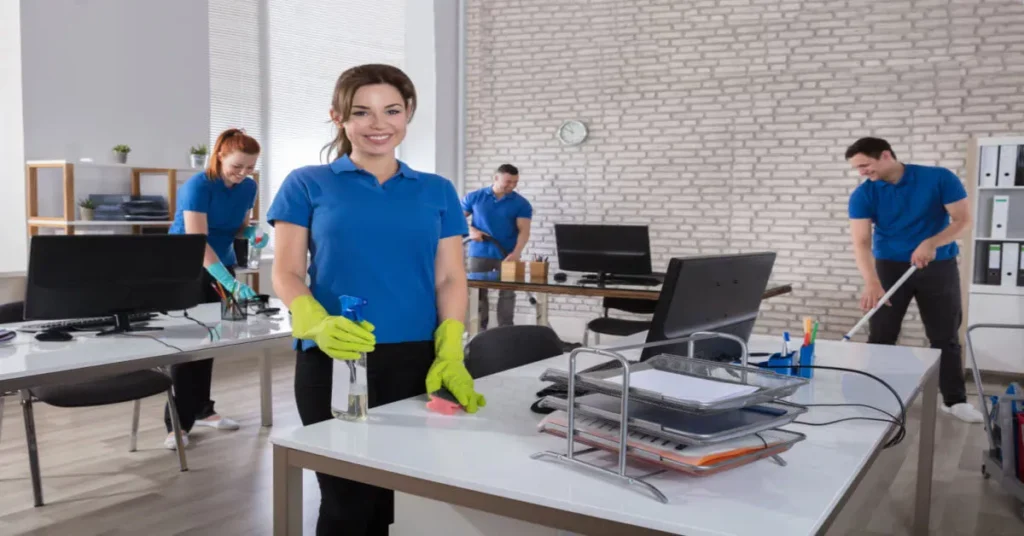Maintaining your driveway after a thorough cleaning is essential to preserve its appearance, longevity, and functionality. Whether your driveway is made of concrete, asphalt, pavers, or gravel, consistent maintenance can save you time and money in the long run by preventing damage and wear. ln this blog post, Evolution DR Cleaning helps walk you through the best practices for maintaining your driveway post-cleaning to ensure it remains in top condition.
Importance of Post-Cleaning Driveway Maintenance

Driveway cleaning is an essential task that helps remove dirt, stains, and grime buildup. However, cleaning alone isn’t enough to maintain the pristine condition of your driveway. Without proper post-cleaning maintenance, issues such as cracks, fading, and weed growth can arise, negating the effects of cleaning. Regular maintenance not only preserves the driveway’s aesthetic but also enhances its durability, ensuring that it can withstand daily wear and environmental factors for years to come.
Post-cleaning driveway maintenance is crucial for preserving the longevity and appearance of your driveway. After a thorough cleaning, sealing the surface helps protect against stains, weather damage, and wear from daily use. Regular maintenance ensures that the driveway remains in optimal condition and extends its lifespan. Linking this with post-construction cleaning services, professionals can provide both deep cleaning and ongoing maintenance advice, ensuring that your newly constructed or renovated driveway stays pristine and functional.
Sealing the Driveway: An Essential Step
One of the most important steps in maintaining your driveway after cleaning is sealing it. Driveway sealants act as a protective barrier that shields the surface from moisture, oil stains, and harsh weather conditions. For asphalt driveways, sealcoating can prevent cracking and fading, while for concrete driveways, sealing reduces the risk of moisture penetration, which can lead to freeze-thaw damage. Typically, sealing should be done every 1-3 years depending on the material and environmental exposure.
Applying a sealant is a straightforward process. After the driveway has been cleaned and dried completely, you can apply the sealant using a roller or a brush. It’s important to choose a high-quality sealant that is appropriate for your driveway material. Keep in mind that sealing should be done on a warm, dry day to allow for proper curing.
Repairing Cracks and Potholes
After cleaning, it’s crucial to inspect the driveway for any cracks or potholes. Even small cracks can quickly turn into larger issues if left untreated, allowing water to penetrate and weaken the surface. For asphalt driveways, crack fillers and patching materials are available to fill in minor imperfections. For concrete driveways, you can use a concrete patching compound to fix cracks.
When addressing potholes, it’s best to use cold patch asphalt for asphalt driveways or a gravel-and-sand mixture for gravel driveways. Patching these areas will prevent further damage, such as erosion or expansion of the affected area. Taking care of repairs right after cleaning ensures that you start with a fresh, solid surface, reducing the chances of further deterioration.
Controlling Weed and Moss Growth
After a thorough cleaning, one of the most common issues that can arise on paver or gravel driveways is the growth of weeds and moss. Weeds can weaken the structural integrity of the driveway by penetrating the joints between pavers, while moss makes the surface slippery and unattractive.
To keep these unwanted plants at bay, consider using a weed-killer specifically designed for driveways or apply a weed-preventive treatment during the maintenance routine. Moss can be controlled with a moss removal solution or simply by regularly sweeping and maintaining good drainage to prevent moisture buildup. By taking these preventive measures, you can ensure that your driveway remains clean and safe to walk or drive on.
Ensuring Proper Drainage
A critical aspect of maintaining your driveway post-cleaning is ensuring proper drainage. Water pooling on your driveway can cause significant damage over time, leading to cracks, potholes, or erosion, particularly in concrete or gravel driveways. After cleaning, take note of any areas where water tends to accumulate. You may need to adjust the slope of your driveway or install drainage solutions, such as French drains or swales, to redirect water away from the surface.
Ensuring proper drainage is crucial for maintaining the longevity and safety of your driveway. Effective drainage prevents water accumulation that can lead to cracks, erosion, and other damage. Installing proper grading, using drainage channels, and ensuring gutters and downspouts are clear are key practices. Regular driveway cleaning methods, and sweeping, can help maintain proper drainage by removing debris that may obstruct water flow and contribute to pooling. This routine upkeep supports a functional and durable driveway.
Preventing Oil and Stain Damage
Driveways are prone to stains from vehicle oil, gas, and other substances, which can be particularly damaging to asphalt and concrete surfaces. Even after a thorough cleaning, the surface is still susceptible to new stains if not properly maintained. Applying a sealant, as mentioned earlier, is a great first step in preventing stain penetration.
For immediate protection, consider placing drip pans or mats under parked vehicles to catch leaks. Additionally, prompt cleanup of spills is essential to avoid long-term damage. You can use absorbent materials like cat litter or baking soda to soak up fresh spills, followed by a specialized driveway cleaner to remove any residual stains. Regularly inspecting your driveway for stains and addressing them immediately will keep your surface looking clean and well-maintained.
Protecting Your Driveway from Weather Conditions
Weather can have a significant impact on the condition of your driveway, especially in regions that experience harsh climates. Freeze-thaw cycles in colder climates can cause cracks in concrete and asphalt, while extreme heat can lead to softening and degradation of asphalt driveways. To protect your driveway from these elements, there are several steps you can take.
Protecting your driveway from weather conditions involves regular maintenance and protective treatments. Sealcoating helps shield against UV rays, rain, and ice, preventing cracks and deterioration. Additionally, keeping debris and grime off the surface with regular driveway cleaning can prevent stains and damage. A professional driveway cleaning service ensures your driveway is thoroughly cleaned and prepped before applying sealant, enhancing its longevity and appearance. Combining these practices can significantly extend the lifespan of your driveway and keep it looking its best.
For gravel driveways, regular grading is necessary to ensure an even surface and prevent potholes caused by heavy rainfall or melting snow. By preparing your driveway for the changing seasons, you can avoid weather-related damage and extend its lifespan.
Regular Cleaning and Sweeping
Maintaining the cleanliness of your driveway after the initial deep cleaning is essential. Dirt, leaves, and debris can accumulate quickly, and if left unchecked, they can trap moisture, leading to stains, mold, or weed growth. Regularly sweeping your driveway is a simple and effective way to prevent these issues.
For paver driveways, sweeping also helps redistribute the joint sand, which can become dislodged over time. In addition to sweeping can help remove any buildup of dirt or grime that sweeping alone may not eliminate. Regular cleaning ensures that your driveway remains visually appealing and free of elements that can cause long-term damage.
Resealing Paver Joints
If your driveway consists of pavers, you will need to pay attention to the joints between them. Over time, joint sand can erode, leading to weed growth or the shifting of pavers. To maintain the structural integrity of your paver driveway, it’s essential to reseal the joints after cleaning.
This process involves adding new sand to the joints and then applying a joint stabilizer or sealer to lock the sand in place. Resealing the joints prevents weed growth, adds stability, and enhances the appearance of your driveway. This maintenance step should be performed every few years to keep the driveway in optimal condition.
Monitoring and Preventing Erosion on Gravel Driveways
Gravel driveways require a different approach to maintenance compared to asphalt or concrete. After cleaning, gravel driveways are prone to erosion, especially during heavy rain or from frequent vehicle traffic. The best way to combat erosion is by regularly replenishing the gravel, ensuring that the surface remains even and free of potholes.
You can also add a layer of geotextile fabric beneath the gravel to improve drainage and reduce the movement of gravel over time. Regular grading of the driveway with a tractor or rake will also help maintain an even surface, while diverting water away from the driveway with proper drainage systems will further reduce erosion risks.
Regular Inspection and Maintenance Schedule
Maintaining your driveway requires consistent effort, and the best way to ensure that no issue goes unnoticed is by establishing a regular inspection and maintenance schedule. This involves setting aside time every few months to inspect the surface for cracks, stains, or weed growth, and performing the necessary repairs or preventive measures.
A well-maintained driveway not only improves your home’s curb appeal but also prevents more costly repairs in the future. By staying on top of maintenance, you can address small issues before they turn into bigger problems, ensuring that your driveway remains in excellent condition for years to come.
A regular inspection and maintenance schedule is crucial for preserving the condition and functionality of driveways. This involves routine checks for cracks, stains, and other wear and tear, followed by timely repairs and cleaning. In Jacksonville, FL, many driveway cleaning services offer maintenance plans that include periodic inspections and proactive upkeep. These plans ensure your driveway remains in top shape, preventing costly repairs and extending its lifespan. Regular maintenance through these services can help you maintain both the appearance and value of your property.
FAQs
Should you seal a driveway after cleaning?
The simple answer is yes if you can afford it, having your driveway sealed properly after cleaning will protect the surface and keep your driveway looking better for longer it will also be much easier to maintain and you can avoid the trap of leaving the driveway to get dirty again and washing again in a year .
What to put on a driveway after cleaning?
After a thorough driveway cleaning, the surface is vulnerable to fresh stains from oil, grease, or other contaminants. Driveway sealing acts as a protective barrier, preventing these substances from penetrating the surface and staining it. This helps to maintain the driveway’s clean and inviting appearance.
Can you seal a dirty driveway?
Sealing without cleaning first is a huge mistake that only a novice would make. However, getting out all of the dirt and grime along with stains is a must before permanently securing them onto the driveway’s surface with a sealer.
How do I freshen my driveway?
The best way to clean your driveway is with a washer and surface cleaner attachment. A garden hose with a spray nozzle also works but usually isn’t as effective and takes much longer. For stains, use a gentle cleaner that won’t harm your surface material.
How do I whiten my driveway?
Mix one cup of bleach with one cup of powdered laundry detergent, then add 15 cups of hot water. Pour your mixture over your driveway’s dirty areas, such as the parts that contain oil stains. Work your mixture in using a bristle brush and scrub for approximately 20 minutes.
Conclusion
Maintaining your driveway after cleaning is a multi-faceted process that involves sealing, repairing, cleaning, and protecting the surface from environmental and mechanical damage. Whether you have an asphalt, concrete, paver, or gravel driveway, following the steps outlined in this guide will help you keep your driveway looking and functioning its best. From sealing and repairing cracks to controlling weed growth and addressing drainage issues, regular maintenance will preserve the longevity and appeal of your driveway, saving you time and money in the long run.


